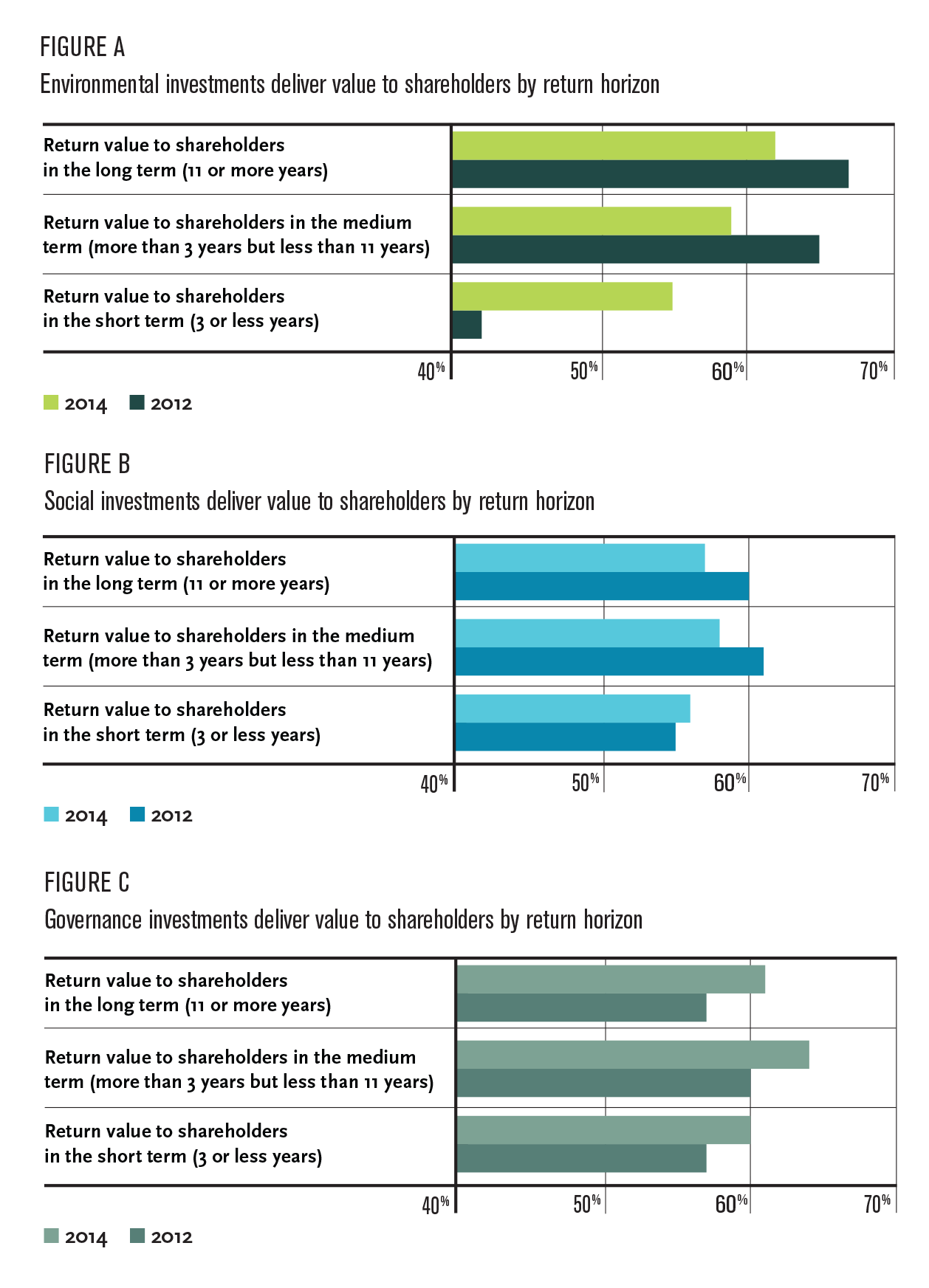“I have been struck again and again by how important measurement is to improving the human condition.”—Bill Gates
When done right, corporate citizenship is a serious investment of money, resources, and time. To ensure that your CSR programs continue to receive the funding and attention they deserve, you must be able to demonstrate—to your leaders, your partners, and broader stakeholders—the return on that investment, or the ROI. What do your efforts offer the business? How do they advance the missions of your nonprofit partners? How are they benefiting your employees, customers, and shareholders?
Broadly, we know that strong corporate citizenship performance touches all of these areas. It can increase brand loyalty, customer retention, and purchase intent[i], and drive employee engagement[ii] and productivity[iii]. It can bolster firm value by improving credit ratings[iv] and lowering the cost of equity[v], and—according to the Boston College Center for Corporate Citizenship’s 2014 State of Corporate Citizenship study—deliver value to shareholders over the short, medium, and long terms (see Figures A-C).

Achieving these results isn’t as simple as just creating CSR programs, however. In order to offer benefits back to your specific business and communities, your efforts must be aligned with your business strategy, must make use of your company’s unique core competencies, and must be developed with the needs and expectations of your communities in mind.
Corporate citizenship programs return value to companies in specific ways, and one size doesn’t fit all. The key to determining exactly how your efforts are supporting the triple bottom line relies on a clear strategy, a defined evaluation process, the data support it, and an ability to communicate it clearly in five minutes or less.
To begin, you need to understand who your stakeholders are and where their interests lie. You need to fully grasp your company’s business strategy—as well as what motivates it and how your operations impact the environment and the communities you serve. And finally, you must be able to account for the specifics of your own programs. What are the inputs, outputs, and outcomes of your efforts, and—most importantly—what is the measurable long-term effects of those efforts on your target audience? This final measurement is what we call the social impact, and it is the strongest indicator of the true social value your corporate citizenship initiatives provide. Unfortunately, according to the Center’s 2015 Community Involvement Report, it is the one that is measured least frequently.
Measurement and evaluation are critical steps in the management of corporate citizenship efforts, as they provide a systematic method to identify, collect, and analyze the data that is vital for performance improvement. The process I’ve described above may sound labor and time intensive—and it is—but it pays off dividends in the forms of increased executive support and investment, stronger programs, and more satisfied and informed stakeholders. You need look no further than Bill Gates for proof. Taking what he learned from building and running one of the most successful data-driven companies in the world, Microsoft, he and his wife Melinda have created a hugely successful philanthropic model that begins and ends with measurement.
If you’re just beginning your measurement journey, rest assured that you don’t have to go about it alone. The Center offers numerous resources to help you along the way, including a course dedicated to the subject. If you’d like to learn the tips and tactics for beginning your measurement program, or to take your evaluation efforts to the next level consider joining us in San Francisco this November for our course: Logic Model and ROI: Advanced Corporate Citizenship Management.
The course offers IACET and CPE credit and can be counted towards your Certificate of Corporate Citizenship Practice.
[i] Batista-Foguet, J. M., Iglesias, O., & Singh, J. J. (2012). Does having an ethical brand matter? The influence of consumer perceived ethicality on trust, affect and loyalty. Journal of Business Ethics, 111 (4), 541-549.
[ii] Caligiuri, P., Mencin, A., & Jiang, K. (2013). Win-win-win: The influence of company-sponsored volunteerism programs on employees, NGOs, and business units. Personnel Psychology, 66 (4), 825-860.
[iii] Delmas, M. A., & Pekovic, S. (2013). Environmental standards and labor productivity: Understanding the mechanisms that sustain sustainability. Journal of Organizational Behavior, 34 (2), 230-252.
[iv] Attig, N., El Ghoul, S., Guedhami, O., & Suh, J. (2013). Corporate social responsibility and credit ratings. Journal of Business Ethics, 117, 679-694.
[v] Dhaliwal, D. S., Li, O. Z., Tsang, A., & Yang, Y. S. (2011). Voluntary nonfinancial disclosure and the cost of equity capital: The initiation of corporate social responsibility reporting. The Accounting Review, 86 (1), 59-100.